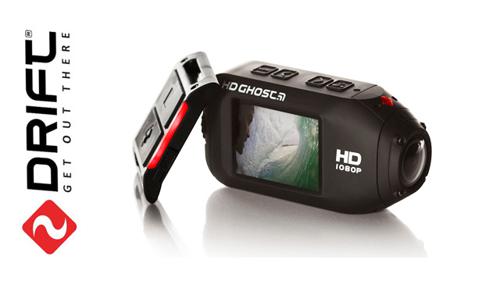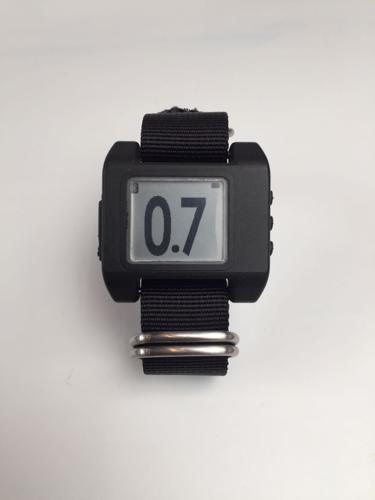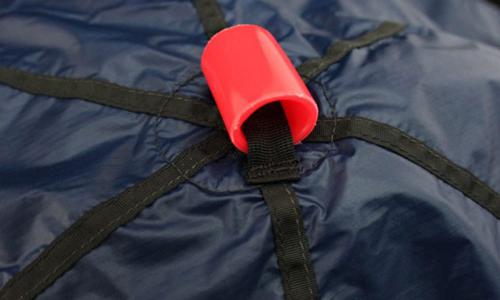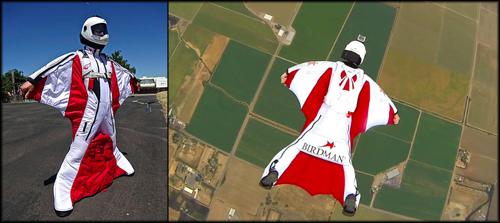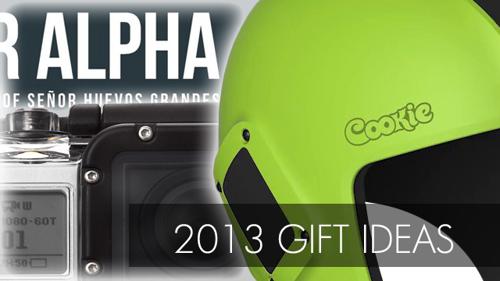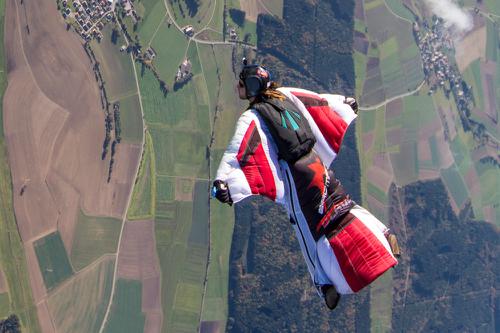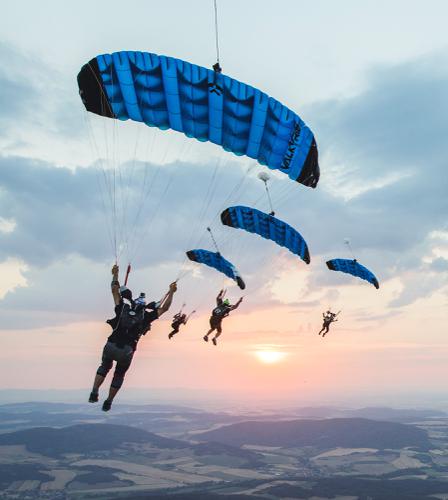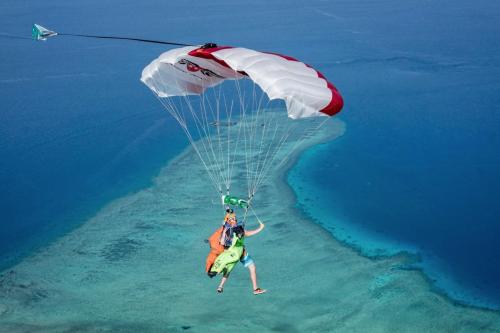With under two weeks until Christmas of 2013, I hope you've already done your Christmas shopping. But in case you haven't, we've put together a list of potential gifts, ranging from high end gear (perhaps for those looking to leave themselves, or their loved one something skydiving related under the tree), to smaller stocking stuffers that could be a good gift for friends and fellow jumpers.
Cookie Fuel Helmet
This open face helmet can be ordered as the helmet only for use as a basic, comfortable open-face helmet. Or it can be transformed into a full-on camera helmet with a top-mount, side-mount, cutaway chinstrap and outside access audible mount.
Just as Cookie Composites revolutionized the full-face camera helmet with the G3, the Fuel looks to do the same for the open-face and POV camera helmet markets.
The Cookie Fuel shell is made of a High Impact ABS / Polycarbonate Blend. It comes standard with pressed foam chin strap (non-cutaway) and blank side and top plates.
The blank side plates will hold any audible altimeter, but the audible won’t be visible from the outside of the helmet unless the optional audible mount side plate is ordered.
For more information and pricing visit:
From Skydive Store
From Chuting Star
GoPro Hero 3 Black
Capture and share your life’s most meaningful experiences with the HERO3+ Black Edition. 20% smaller and lighter than its best-selling predecessor, it delivers improved image quality and powerful new features geared for versatility and convenience. SuperView™ is a new video mode that captures the world’s most immersive wide angle perspective, while Auto Low Light mode intelligently adjusts frame rate for stunning low‐light performance. Combined with 30% longer battery life, faster built-in Wi-Fi and a sharper lens, the HERO3+ Black Edition is the most advanced GoPro yet.
For more information and pricing visit:
From Skydive Store
From Chuting Star
GoPro LCD Touch Bacpac
Relive Reality Instantly with the GoPro LCD Touch BacPac.
The LCD Touch BacPac is a removable LCD touch screen for GoPro cameras*. As a removable accessory, the LCD BacPac keeps your camera as small and light as possible, yet provides the convenience of an LCD screen when attached.
Seamlessly attaches to the back of GoPro cameras
LCD touch screen allows for easy visual control of camera (frame your perfect shot) and settings
Preview + playback photos and videos including instant slow motion playback
Integrated speaker with volume control
3.5 mm headphone jack
For more information and pricing visit:
From Skydive Store
From Chuting Star
Gear Bags
Looking to stash all your gear into a single bag, making carrying a breeze. These gear bags have plenty of room, for your rig, jumpsuit, camera and your accessories.
For more information and pricing visit:
From Skydive Store
From Chuting Star
Pro Track
The ProTrack audible altimeter/electronic logbook is the standard for audible altimeters.
The ProTrack continuously stores detailed information about the last 200 jumps and accumulates the total number of jumps and freefall time up to 10,000 jumps. The ProTrack has 3 selectable freefall warning altitudes.
The Most Popular Skydiving Computer Loaded with advanced features, PROTRACK™ gives skydivers a full plate of information about their skydives INSTANTLY on the large LCD viewscreen.
Whether you fly on your head, turn points like a banshee, dock first on a big-way, surf the clouds or are just learning to skydive, PROTRACK™ is the perfect audible altimeter solution for you. L&B; has also added special data collection parameters and preset dive types for both WINGSUIT FLIGHT and B.A.S.E. JUMPING making the PROTRACK™ even more versatile for every type of jump and every kind of jumper.
PROTRACK™ can be easily set for 1, 2 or 3 loud and distinct freefall warning altitudes and will provide you with the ability to log up to 9,999 jumps! See your exit altitude, freefall time, average freefall speeds, maximum speed reached and deployment altitude of your skydive as soon as you land.
No other audible altimeter available gives you the versatility, accuracy and reliability like PROTRACK™! PROTRACK™ is the most advanced, user friendly, and accessible audible altimeter electronic logbook/freefall computer available to skydivers.
PROTRACK™is everything you would ever want in an audible altimeter. New technology advances in speed calculation have been developed by L&B; so that skydivers can now record and compare their freefall speeds accurately.
For more information and pricing visit:
From Skydive Store
From Chuting Star
Stocking Stuffers
Flexvision Goggles
Flexvision Goggles: the goggles with a friction lock adjustment and without an outer rim to fall off!
Flexvision are made from a soft, flexible, long-lasting plastic that is scratch resistant. Each pair is individually sanded on the inside for a smooth finish, and offer a wide field of vision.
A thick bungee strap pulled through a small hole in the plastic allows the user to adjust the tension without need to make a knot, just pull to the desired tension and release. The friction Lock is a unique feature, especially for students and tandems where there is a need to change settings often.
The Flexvision Goggles come flat, but then conform and mold to your face as you put them on and tighten up the bungee.
Keep an extra set in your jumpsuit! These are one of the longest-lasting goggles manufactured specifically for skydiving and give you an unobstructed field of vision.
For more information and pricing visit:
From Skydive Store
From Chuting Star
Neumann Winter Skydiving Gloves
These gloves are the standard for winter hand protection for skydivers from the company that knows gloves: Neumann.
These gloves have a thermal-lined back for extra warmth in the winter.
Neumann Tackified Skydiving Gloves are:
Designed To Fit Like A Second Layer Of Skin
Meets NFL/NCAA Specifications
Ensure Finger And Hand Sensitivity
Tackified Leather Palms
Machine Wash and Air Dry
For more information and pricing visit:
From Skydive Store
From Chuting Star
Skydiving Santa Christmas Cards
What better Christmas card to send to friends from the dropzone than a skydiving Santa Christmas card.
From Chuting Star
Sugar Alpha
"Skydiving and drug smuggling pioneer Roger Nelson lives life out of the box. Fueled by a love for adrenaline and adventure, Roger goes after everything he wants with gusto. But now Roger is ready to retire from smuggling. With a parachute center to run and a family to raise, Roger knows it is time to stop the cat-and-mouse games he has been playing with the authorities for years.
He and his longtime partner, Hanoi, plan one final run to Belize, where they intend to fill their Douglas DC-3 with enough cannabis to set them up for life. But then Hanoi dies in a plane crash in an attempt to make some "legitimate bucks" flying fish in Alaska while they wait for the growing season to end.
Left without a partner or plane, Roger remains determined to return to his family for good. To do so, he decides to stay true to himself and follow through with his retirement run. Roger must rely on a colorful cast of characters and the most unlikely airplane for a gig ever-Sugar Alpha, the legendary DC-3 with the secret fuel tanks and not-so-secret paint job-to help him complete the most daring run in the history of smuggling."
The book has received excellent reviews and would make a great gift to anyone who enjoys a good book.
Log Book Cover
An inexpensive and useful gift for your friends who jump.
For more information and pricing visit:
From Skydive Store
From Chuting Star
Beer Mug
For more information and pricing visit:
From Skydive Store
The Skydiving Handbook
Parachuting, The Skydiver's Handbook by Dan Poynter and Mike Turoff is the one and only how-to, where-to, basic-to-advanced skydiving manual.
This up-to-date book covers all training methods in great detail: static line, accelerated freefall, Instructor assisted deployment and Tandem. It traces the history of the parachute up to modern skydiving, year by year. The chapter on emergency situations is absolutely fascinating. Full of statistics, it reveals the best solution to every possible emergency situation.
The book goes on to coach you in your freefall progression, from the basics through advanced relative work and free style, and in flying your canopy, from the basics to advanced canopy relative work.
The equipment chapter is lengthy because this is where Dan Poynter has always been strongest. He tells you all about your gear, what to look for, what repairs you can make and when to take it to a rigger. Another chapter covers special jumps: at night, into the water, BASE, para-ski, high altitude, Smoke jumping, with cameras and much more. The Appendix directs you to the action by listing clubs, drop zones, equipment companies, books, magazines and videos.
Never before has so much skydiving information been available in one place-and it can be yours.
The Skydiver's Handbook. Completely revised, ninth edition, softcover, 5.5 x 8.5, 408 pages, 260 illustrations, four-color cover. Over 82,000 in print.
For more information and pricing visit:
From Skydive Store
From Chuting Star


